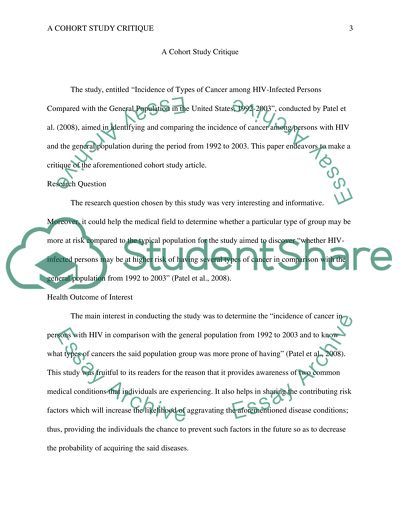Cite this document
(“A Cohort Study Critique Essay Example | Topics and Well Written Essays - 1250 words”, n.d.)
A Cohort Study Critique Essay Example | Topics and Well Written Essays - 1250 words. Retrieved from https://studentshare.org/health-sciences-medicine/1441685-epidemiology-cohort-study-article-critique
A Cohort Study Critique Essay Example | Topics and Well Written Essays - 1250 words. Retrieved from https://studentshare.org/health-sciences-medicine/1441685-epidemiology-cohort-study-article-critique
(A Cohort Study Critique Essay Example | Topics and Well Written Essays - 1250 Words)
A Cohort Study Critique Essay Example | Topics and Well Written Essays - 1250 Words. https://studentshare.org/health-sciences-medicine/1441685-epidemiology-cohort-study-article-critique.
A Cohort Study Critique Essay Example | Topics and Well Written Essays - 1250 Words. https://studentshare.org/health-sciences-medicine/1441685-epidemiology-cohort-study-article-critique.
“A Cohort Study Critique Essay Example | Topics and Well Written Essays - 1250 Words”, n.d. https://studentshare.org/health-sciences-medicine/1441685-epidemiology-cohort-study-article-critique.


